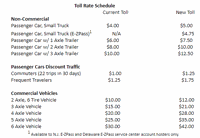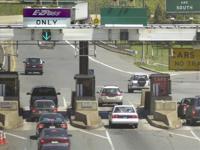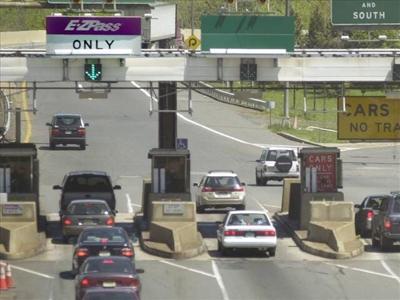NEW CASTLE COUNTY, Del.– The Delaware River and Bay Authority Commission approved a revised version of the Delaware Memorial Bridge toll schedule at the bi-state agency’s monthly meeting held Wednesday.
The toll increase is expected to generate about $32 million in additional annual revenue to fund the agency’s five year $399 million Capital Improvement Program.
This modified proposal includes the following changes to the original one passed in December:
- EZ-Pass discount for passenger car/small truck “home agency” users (NJ EZ-Pass or DelDOT account holders) of 25 cents off the $5 toll rate.
- Frequent Traveler discount rate increases from $1.25 to $1.75. On 1/1/2021, the rate increases to $2.25. Frequent Traveler program is 20 trips in 90 calendar days.
- Delaware River and Bay Authority Five Year Capital Improvement Plan is amended from $423M to $399M.
- Implementation date deferred for two months from March 1 to May 1, 2019.

This revised toll schedule sets the rate for passenger cars and small trucks at $5 while commercial vehicles will pay $2 more per axle. The agency’s discount programs, commuter and frequent traveler, will also be adjusted for just the second time in more than 30 years. The last general toll increase took place on July 1, 2011, according to the DRBA. Approximately 36 million vehicles annually travel across the twin spans.
One of the changes was the adoption of a preferred rate for New Jersey E-ZPass and Delaware E-ZPass service center account holders. “E-ZPass saves customers’ time, reduces auto emissions and enhances fuel efficiency,” said DRBA Executive Director Tom Cook. “We believe that establishing a preferred rate for the home agencies here will encourage Delaware Memorial Bridge customers who pay with cash to sign up for the program.”
Two of the three adjustments made to the original toll rate proposal passed late last year remain in this revised proposal: a reduction in the two –axle commercial class rate, which includes most RVs and dual tire pickup trucks, from $7 an axle to $6 and a change in the number of trips required for the commuter rate. The number of trips in a 30-day period for the commuter plan decreases from 25 to 22.






